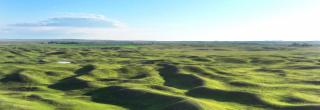
Habitat
The Value of Quality Habitat
Hunting, fishing, wildlife viewing and photography, hiking, camping and other outdoor activities not only raise the quality of life for North Dakotans, participants in these activities bring millions of dollars to rural areas within the state.
Hunting and fishing alone have an economic value to North Dakota of 1.48 billion (source: 2023-24 NDSU Expenditure Survey).
All of these activities are dependent on quality habitats that can sustain fish and wildlife populations.
Habitat loss across North Dakota is impacting both game and nongame negatively.
These impacts trickle down, reducing the number of hunting licenses available and the quality of hunting and fishing experiences, threatening North Dakota's long standing traditions of hunting and fishing.
With 93% of North Dakota's land held in private ownership, access for hunting and fishing has also become a challenge.
Below you can learn more about North Dakota's habitats and the species residing in them, view some of the loss statistics and find out what you can do to help.
Hunting and Fishing
1.48 Billion
The economic value to North Dakota of hunting and fishing
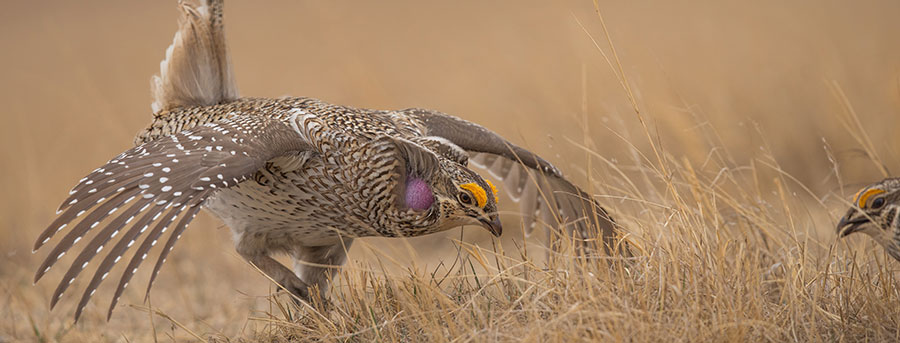
In the News
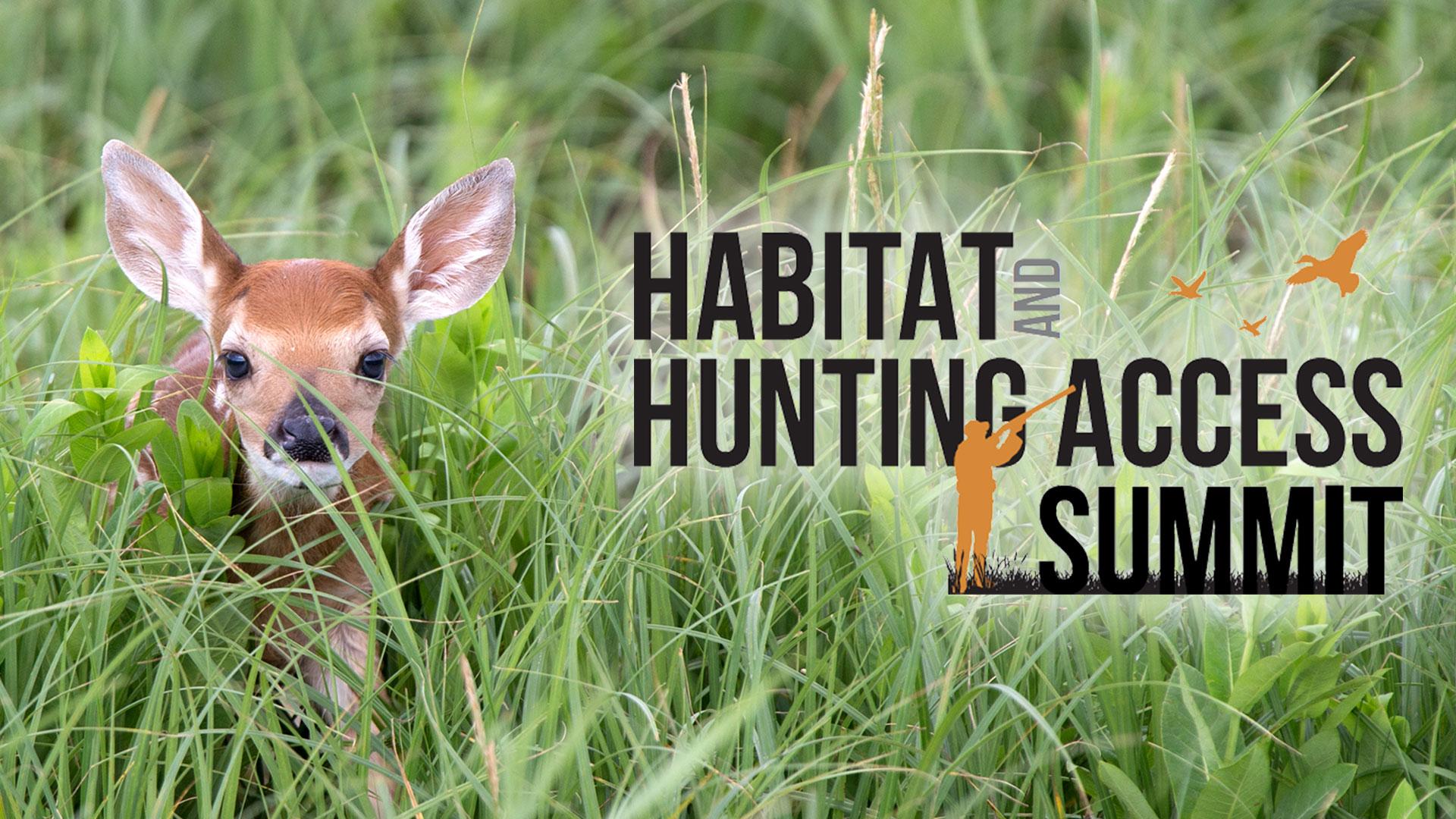
Habitat and Hunting Access Summit
The Habitat and Hunting Access Summit was held in Bismarck December 17, 2024. Department staff, legislators and the public discussed the challenges facing fish and wildlife populations and their habitats and looked at possible ways to address issues.
NDO Podcast - Less Throwing Stones, More Conversations
In this episode of the NDO Podcast, Casey and Cayla talk about the main takeaways from the Habitat and Hunting Access Summit and possible pathways forward.
Habitat is Key for Fish and Wildlife Populations
Listed below are four habitat types in North Dakota and some of the species dependent on them.
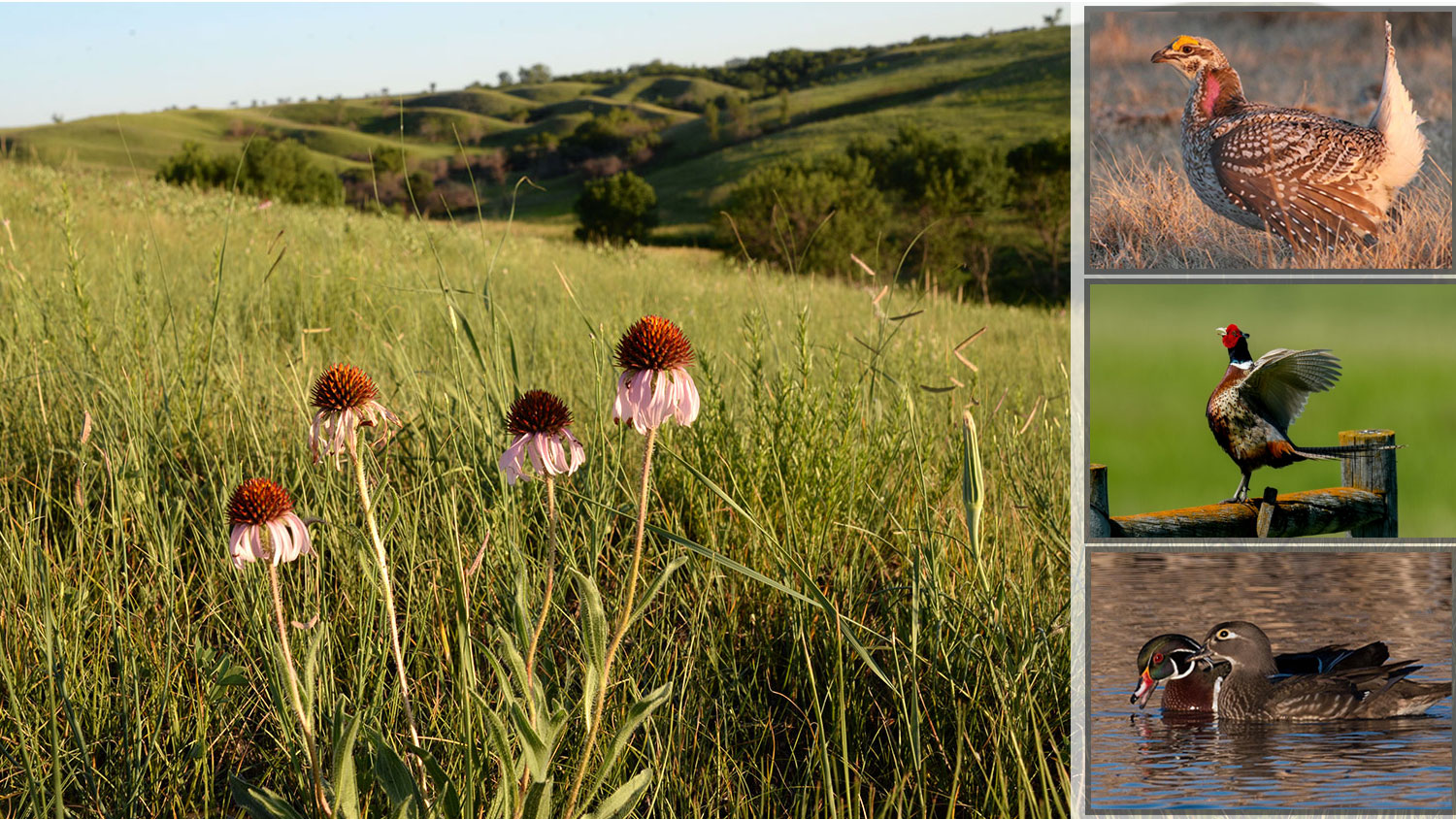
Grasslands
- Sharp-tailed grouse nest in grasslands and shrublands.
- Many North Dakota birds, like the chestnut-collard longspur are dependent on large areas of continuous grasslands for breeding.
- Dabbling ducks require large contiguous stands of dense upland grasses and forbs for nesting.
- Ring-necked pheasants, a popular game species, thrived when there were large areas of CRP on the landscape, and have declined as CRP has disappeared.
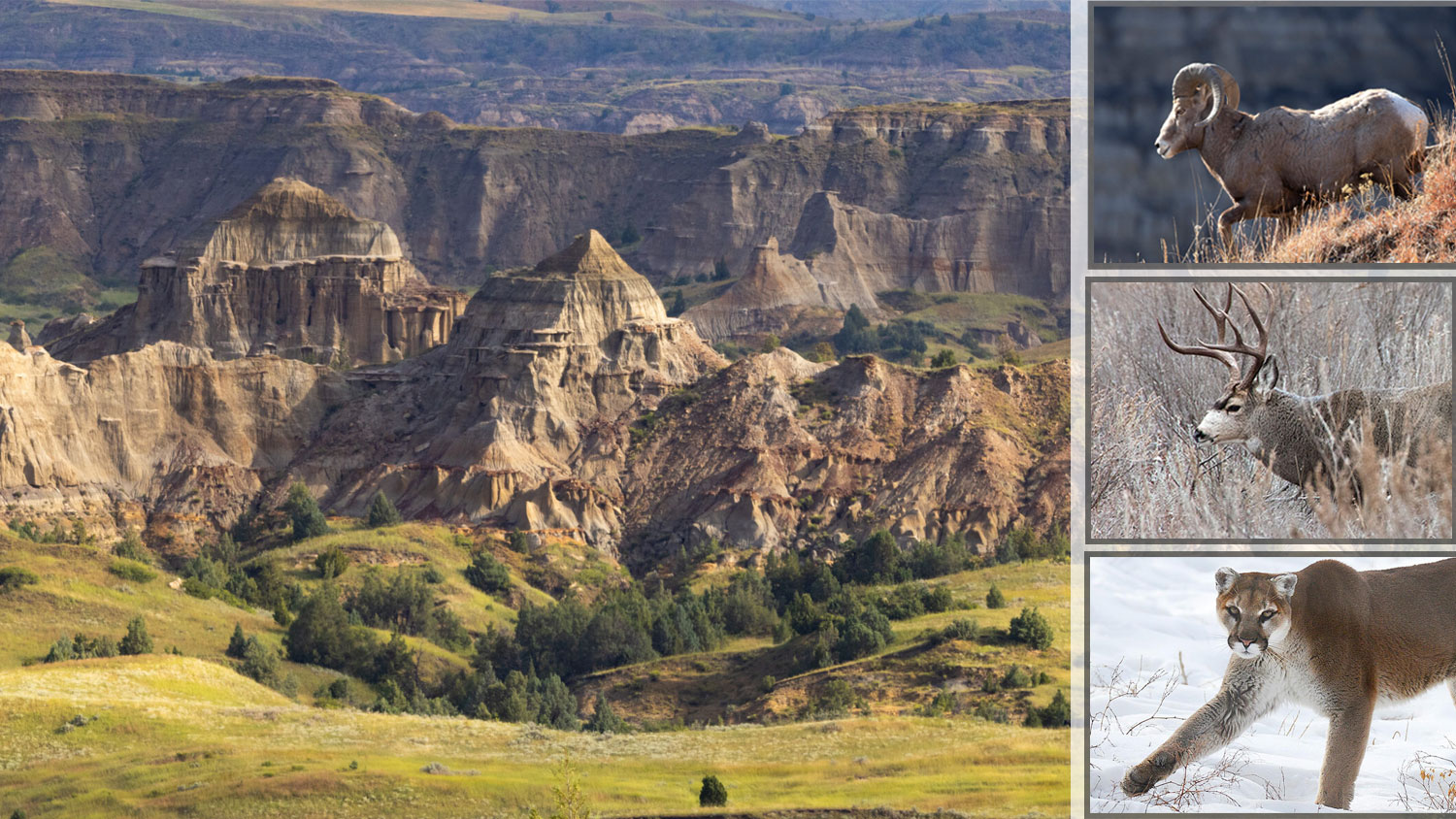
Badlands
- Bighorn sheep can be found in the badlands and rely on the steep, rugged habitat to avoid predators.
- The primary range for mule deer in North Dakota is in the badlands.
- The only breeding population of mountain lions in North Dakota is found in the badlands.
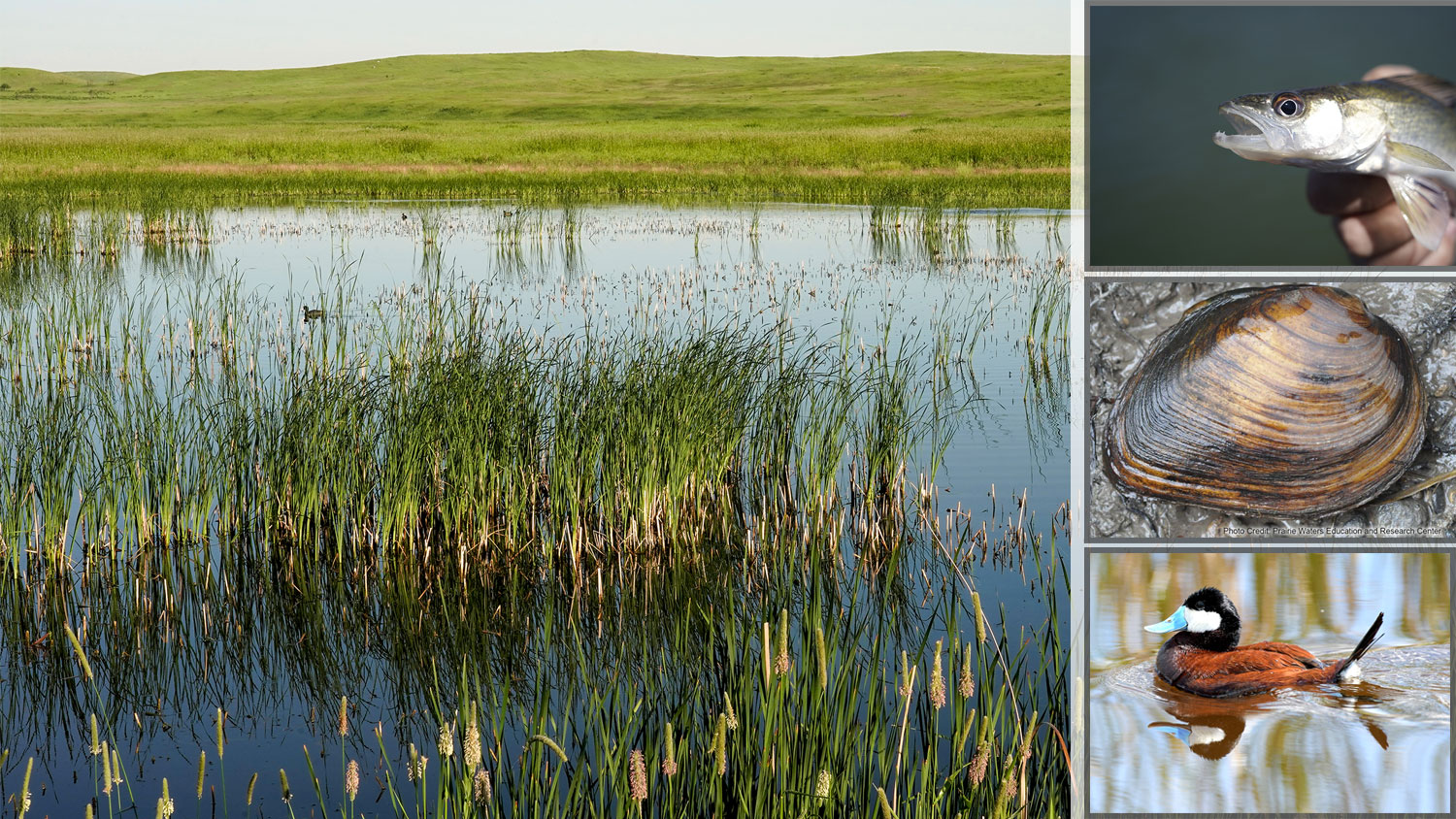
Riparian Areas and Wetlands
- Much of North Dakota's active fisheries can be found in small prairie lakes.
- There are over a dozen freshwater mussels in the state, some of which can live to be over 50 years of age.
- Mallards, gadwall and pintails, which primarily nest in grasslands, have been known to nest one mile or more from brood rearing wetlands.
- Diving ducks generally build over-water nesting platforms from wetland vegetation.
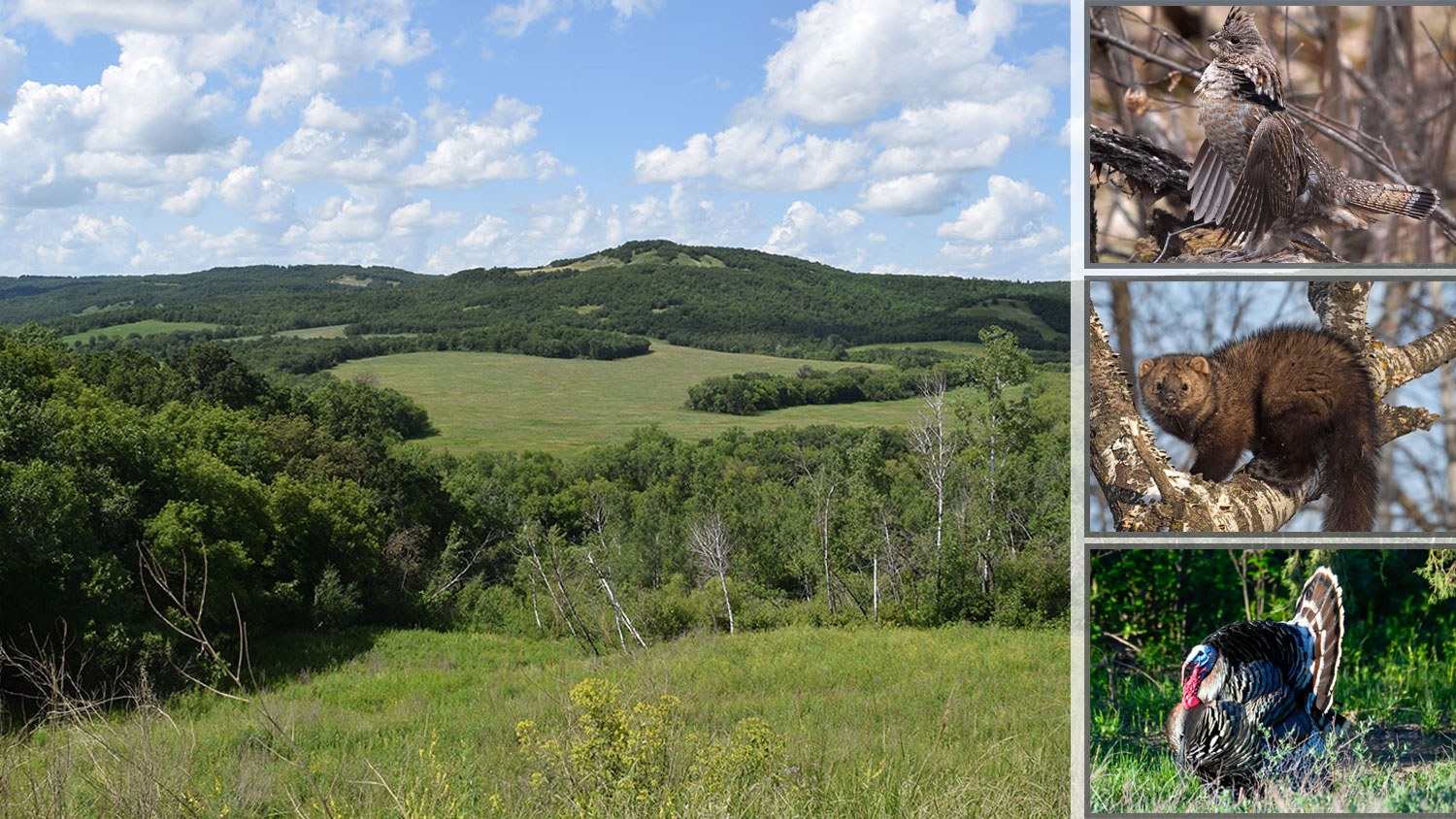
Woodlands
- Woody browses are a food staple for wintering white-tailed deer.
- Typical turkey habitat in North Dakota consists of riparian corridors and woody draws.
- Typical ruffed grouse habitat in North Dakota is found in the aspen forests in the Turtle Mountains.
- Fisher and American Marten, both furbearers, also make their home in the forests of the Turtle Mountains.

Some Numbers
Native Prairie
72%
The amount of North Dakota's native prairie that has been converted
Wetlands
60%
The amount of the nearly 5 million natural wetland acres in North Dakota that have been converted or lost
Grassland Birds
35%
The decline in grassland bird populations over the last 50 years
Impacts of CRP Loss
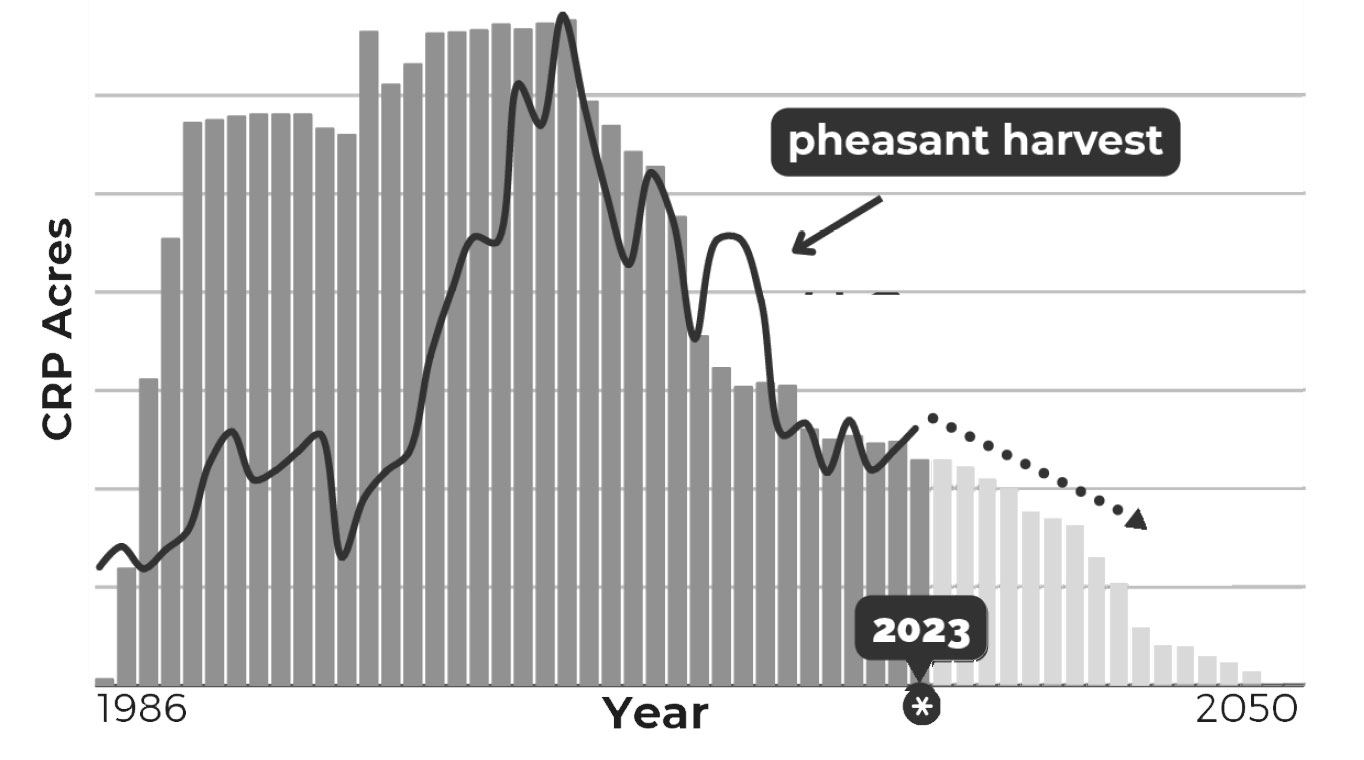
Pheasant harvests have declined as CRP has disappeared from the landscape.
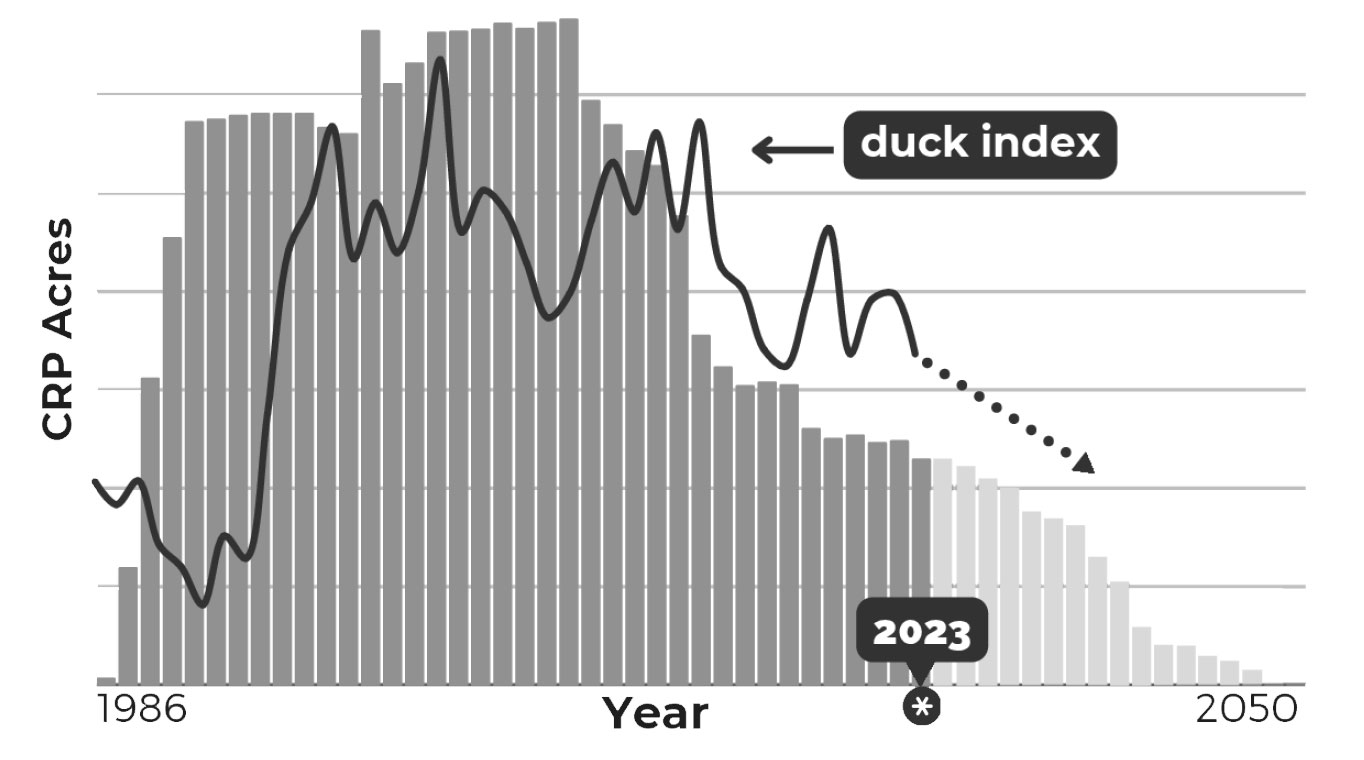
Duck numbers have declined as CRP has disappeared from the landscape.
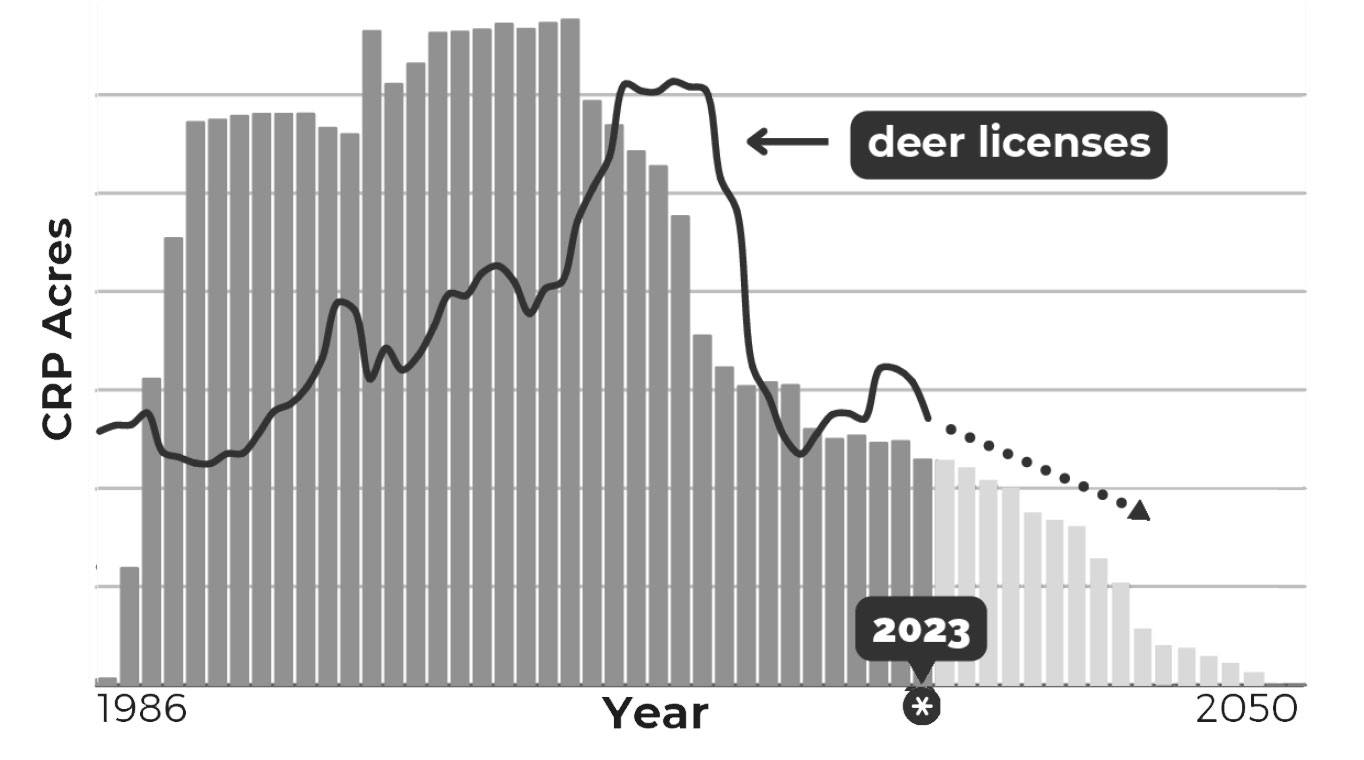
Deer licenses have declined as CRP has disappeared from the landscape.
Everyone Can Make a Difference
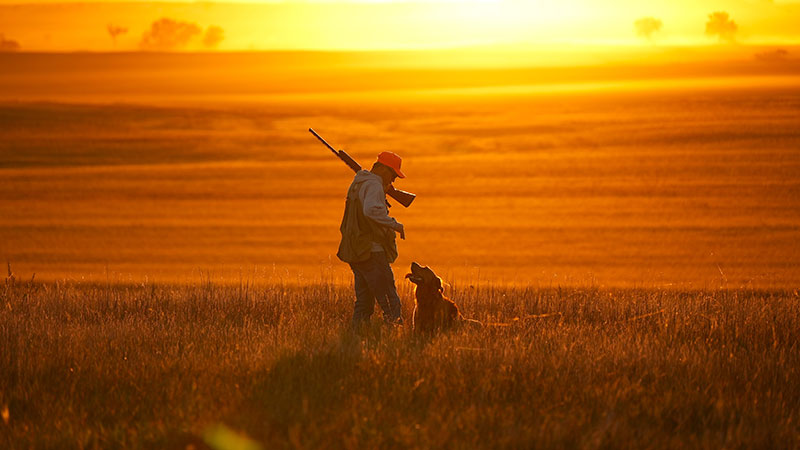
Hunters
Learn about some steps you can take to help preserve North Dakota's hunting and fishing heritage for yourself and future generations.
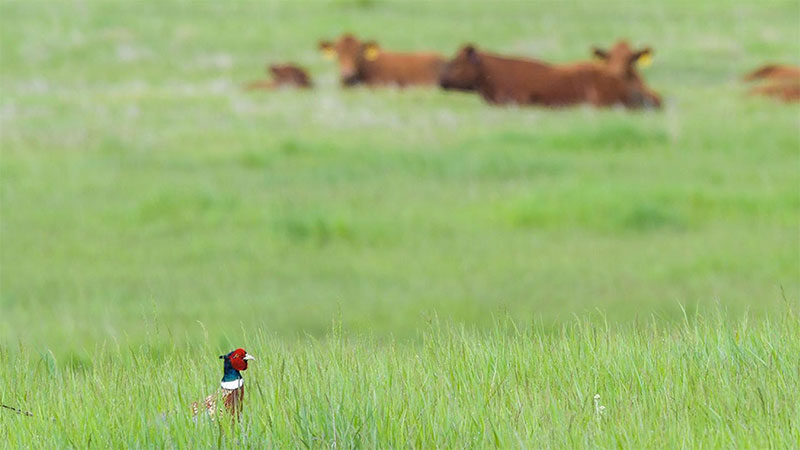
Landowners
Learn about some of the programs and resources available to help you develop and maintain wildlife habitat on your land.
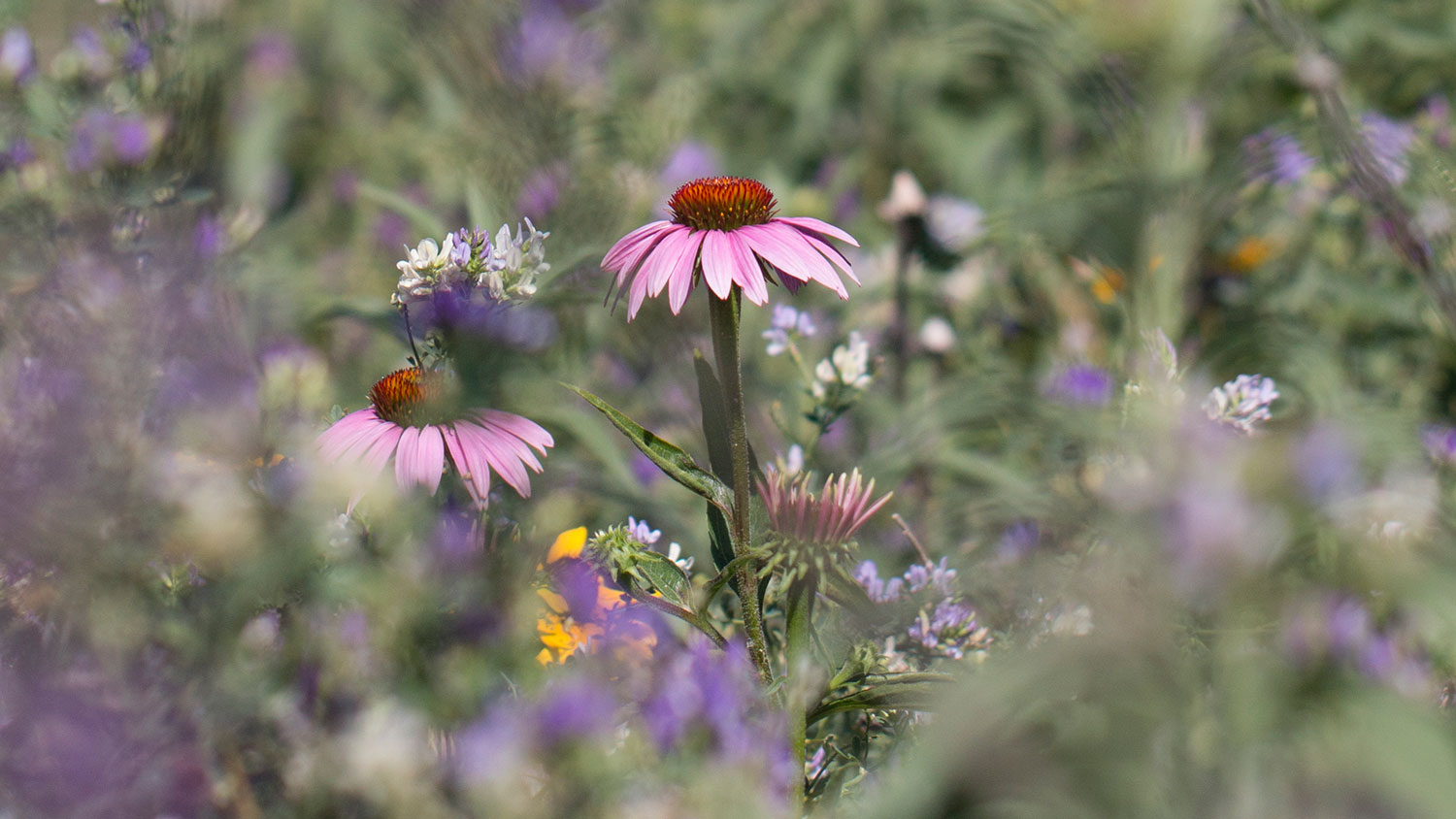
General Public
You don't have to be a hunter, angler or landowner to help protect North Dakota's natural resources. Learn more about steps anyone can take to help.
